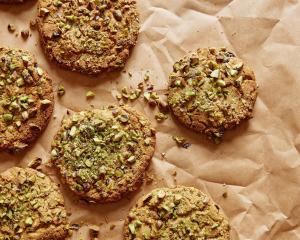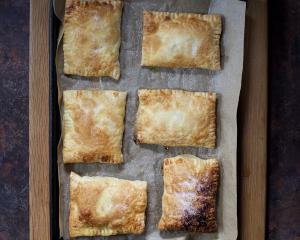
"Clear vibrant flavours served with a minimum of distraction."
Verheul, who launched the celebrated Matterhorn restaurant in Wellington, worked alongside Gordon Ramsey at The Savoy Grill in London, now runs Embla in Melbourne.
But it is Sunday services that have a special place in his heart even though he no longer works many weekends any more. But for his first 20 years in the industry it was rare to get one off. However, he enjoyed the vibe from relaxed customers and a kitchen nearly done for the week.
"But more than food it was the tables full of people who chose to forgo getting the lawns or laundry done in favour of connecting with loved ones over a meal."
He remembers Sundays in New Zealand growing up which were all about his mother’s classic lamb roast.
"Even after I’d gotten older and moved to another town, I always tried to be front and centre when she brought it out of the oven."
And while the recipes in his new book On Sundays might be a bit more complicated than that, he aimed to create that same feeling of being able to share the food with the people you love.
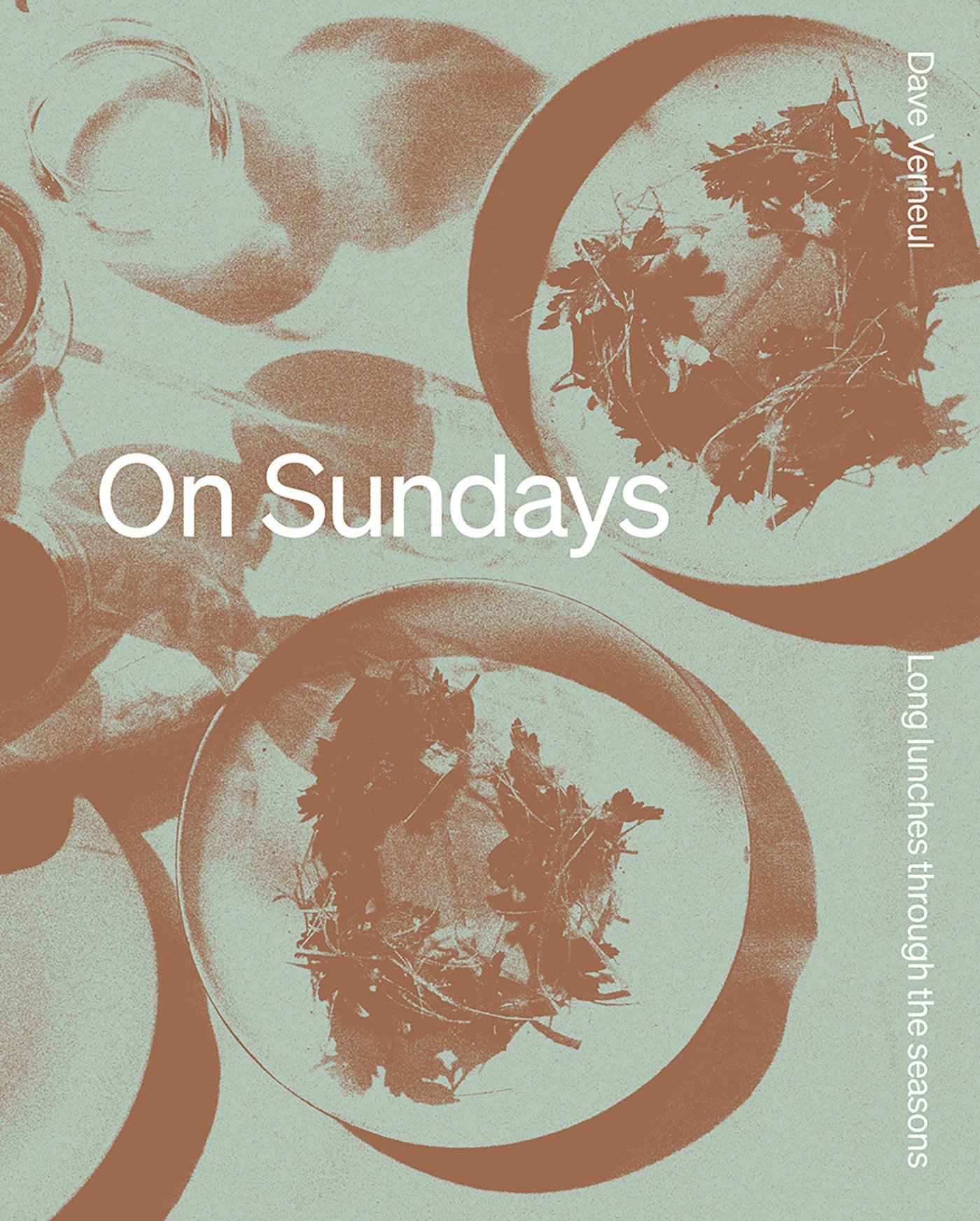
"We use both these mediums in the restaurant as they’re a fun, direct and incredibly tactile way to cook. It requires you to stay closely engaged in the process and that can only make you a better cook."
He also suggests adjusting the recipes with the seasons and reading the recipes right through first. Verheul is also a fan of preserving.
"An ingredient preserved at its peak of flavour could wind up being the exact element a dish is missing months down the road, or provide an enlivening glimpse of summertime in the middle of winter," he says.
One in particular he is a huge fan of is fermented fennel juice, using it in many of his recipes. All it requires is to vacuum-pack 1 litre of juice mixed with whey and salt and store for three weeks (releasing the gas occasionally and resealing) to reach the required sourness. It can then be refrigerated.
"It’s an incredible flavour booster for any vegetarian recipe and it tends to brighten anything you use it in."
The book
This is an edited extract from On Sundays: Long Lunches Through the Seasons by Dave Verheul, published by Hardie Grant Books. Out April 3, 2024.
Copyright photography © Kristoffer Paulsen 2024
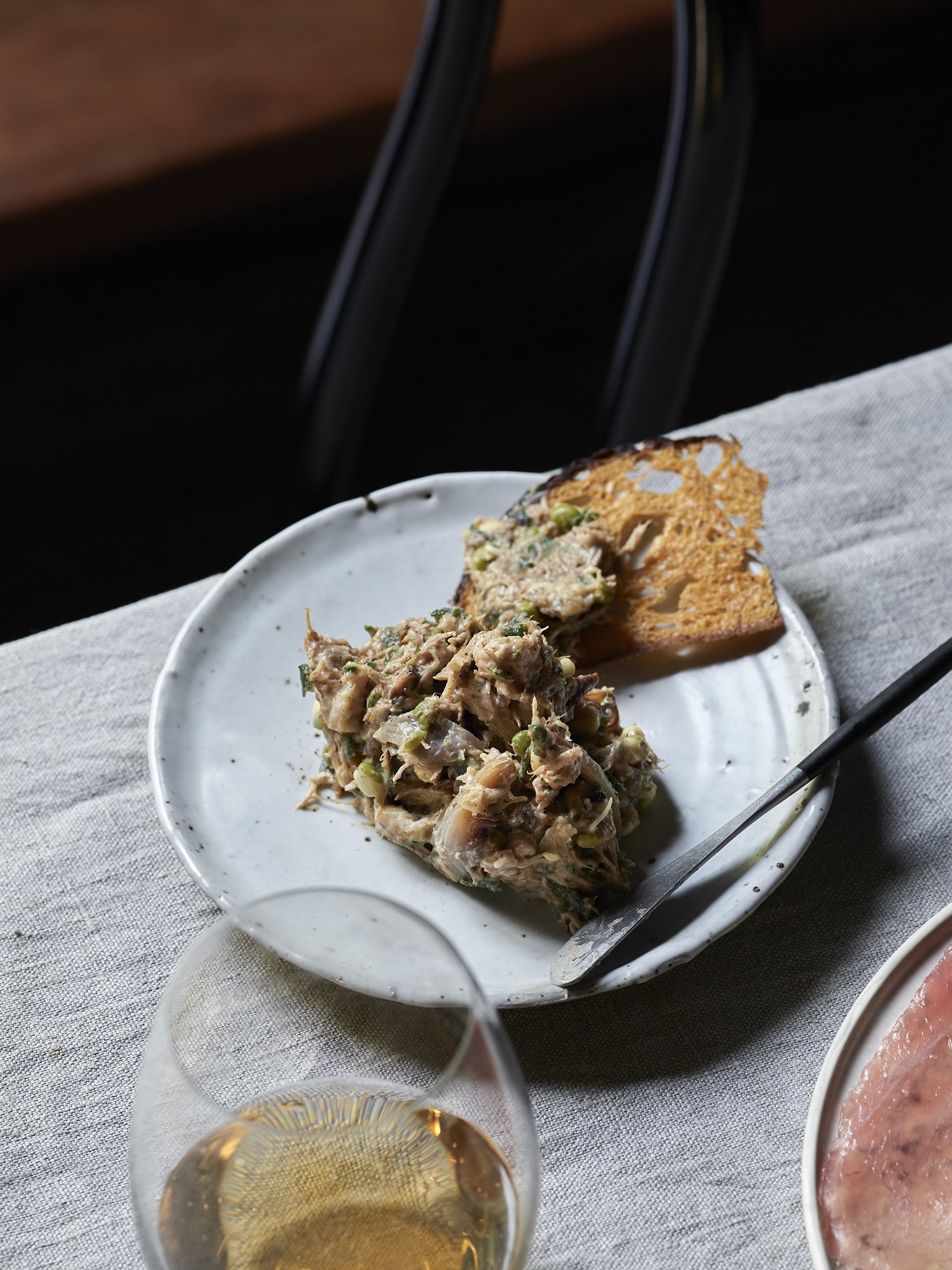 Pork rillettes, shallots, sprouts and crisp sage
Pork rillettes, shallots, sprouts and crisp sage

This is a classic pork rillettes with a few added touches to lighten and balance everything out. Traditional rillettes have a way of feeling a bit pasty, due to overly shredded, slow-cooked meat. In this version we don’t shred, which means you get a more varied texture. Shallots give roasty vegetal notes while the mung bean sprouts (sprout them at home!) are almost like fresh peanuts — so tasty. The sage is there because pork obviously loves sage. Start sprouting the mung beans few days ahead of serving.
Ingredients
Mung bean sprouts
50g ¾dried mung beans
Rillettes
400g skinless pork belly
400g pork shoulder
100g shallots, peeled
40g garlic cloves, peeled
200g pork back fat, diced into 1 cm chunks
Shallots
3 banana shallots
30g olive oil
To finish
20g sage
50ml vegetable oil
20ml olive oil
Grilled sourdough, to serve
Method
Mung bean sprouts — Cover the mung beans with cold water and soak for 8 hours, being sure to remove any beans that float or any other impurities that turn up.
Take a glass jar and add the soaked mung beans, cover the opening with a small piece of muslin (cheesecloth) and fix into place with a rubber band. Under a tap run water into the jar until the beans are covered, then drain off the water again.
You are going to repeat this same wetting action four times a day until they are fully sprouted. Once drained, put the jar in a warm spot but not in direct sunlight. The idea here is to germinate the bean, so you want to keep it moist but not wet.
Mung beans are quick, and they should be good to go in about 36 hours.
Rillettes — Light a fire just before you start prepping the pork. Using a sharp knife cut both the pork belly and the pork shoulder into 2.5cm cubes.
Lightly oil and season the pork belly then spread in an even layer on a rack. Place the rack high above your fire and slowly smoke for 1½ hours. During this time the belly will cook a little and that’s fine, what you don’t want is for the heat to be too high and for the belly to cook too hard and tighten up.
Preheat the oven to 170°C. Once the belly is smelling delicious and has taken on a nice amount of smoke, transfer it to a braising dish, add the remaining ingredients and a small dash of water.
Cover with a tight-fitting lid and braise in the oven until soft to the touch, about 2½ hours. Remove from the oven and leave until cool enough to handle. Using your hands, shred the pork down and emulsify the fat with any moisture that has come from the meat. Season to taste with salt.
Shallots — Using a sharp knife, peel the shallots and split them in half lengthways. Take a cast-iron pan and add the olive oil.
Place the shallots in the pan, cut side down, and season with salt. Put the pan above the fire and slowly cook until caramelised and soft, about 1 hour. Let them cool then roughly chop.
To finish — Take a small pan and fry the sage in the vegetable oil until crisp. Remove from the pan and season with salt. Take a third of the pork rillettes mix and put it into a small bowl. The remainder of the mix will keep in the fridge.
Add the caramelised shallots, olive oil, sage and a handful of the sprouted mung beans. Give it a mix and check the seasoning, adjusting with salt and black pepper. Finally, give it a good whip and transfer to a serving plate. This goes great with freshly grilled sourdough.
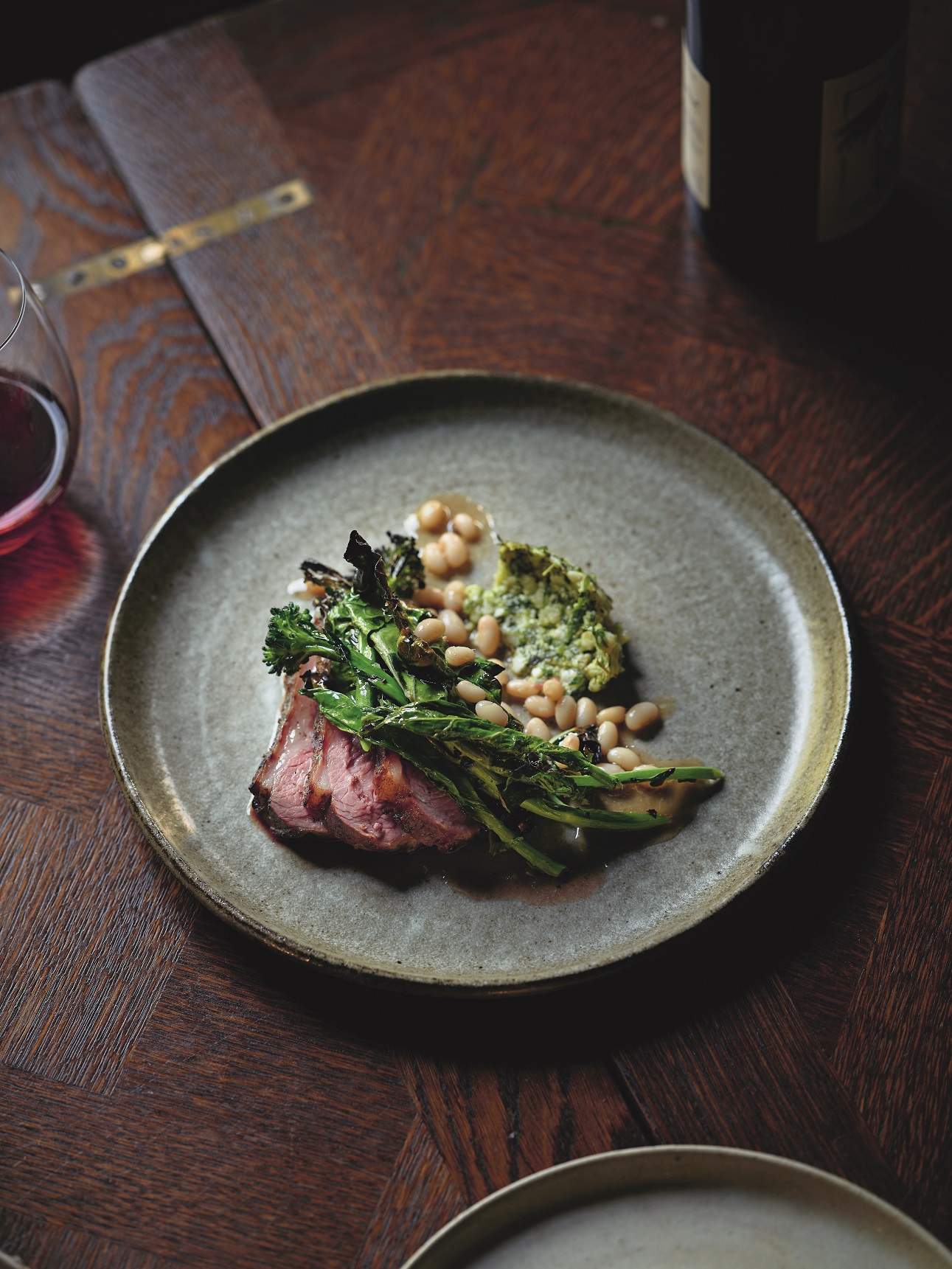 Lamb leg, purple-sprouting broccoli, navy beans, anchovy
Lamb leg, purple-sprouting broccoli, navy beans, anchovy

There’s nothing overtly fishy going on here, just a few anchovies adding some rich savoury notes that go great with the meaty richness of the lamb fat. It’s a classic pairing, just so long as you don’t use the same anchovies you used to get on those 1980s marinara pizzas. The navy beans carry everything along nicely, while also bringing a satisfying little pop.
Lamb leg
1x1kg boneless lamb leg
50g oregano
5 garlic cloves
1 bay leaf
1 shallot
5g rosemary leaves
5g salt
20g rice koji (fermented rice paste used to make Japanese condiments, use miso if cannot source)
100g olive oil
Zest of ½ lemon
Navy beans
100g dried navy beans, soaked overnight
2 garlic cloves, peeled
1 bay leaf
Macadamia pesto
50g macadamia nuts
1g thyme, leaves only
½ garlic clove, peeled
Zest of ½ lemon
20g lemon juice
20g parsley, leaves only
15g capers
10g oregano
70g vegetable oil
25g olive oil
To finish
150g purple-sprouting broccoli
Vegetable oil
150g lamb stock
2 anchovies, chopped
20g olive oil
Method
Lamb leg — You will need to start this the night before you would like to cook the lamb. Using a sharp knife, butterfly the lamb leg open and place into a non-reactive container. Make a marinade by blending the rest of the ingredients together using a hand-held blender. Pour this on to the lamb, making sure to cover all of the leg. Cover and chill overnight.
The next day, light a good fire and let it burn down to a solid bed of coals. Using your hands, remove most of the marinade and place the lamb on to a rack around 1m above the surface of the fire.
Cook slowly for about 1¼ hours, or until it reaches 50°C when tested with a thermometer. The trick here is to manage the heat so that it is consistent but slow; the slower the cook the more tender it will be. Remove from the fire and let it rest, covered, in a warm spot for 10 minutes.
Navy beans — Drain the beans, put in a small pot and cover with water. Bring to the boil and give it a couple of good skims to remove any foam. Turn the heat down to just below a simmer and add the aromats.
Cook very gently for 1½ hours, or until just tender and creamy. Remove the pot from the heat and cool as quickly as possible while keeping the beans submerged.
Macadamia pesto — Place everything, except the oils, into the bowl of a small blender and pulse until roughly chopped. Add in both oils and pulse once to combine. Check the seasoning and season with salt if need be.
To finish — Preheat a wood-fired oven to 450°C. Oil the sprouting broccoli with the vegetable oil and season with salt. Place in a cast-iron pan and cook in the oven until the broccoli starts to get soft.
Add the lamb stock, navy beans and anchovy and continue cooking until everything has warmed through. Remove from the oven, check the seasoning and add the olive oil.
Carve the lamb leg and transfer to a serving dish then top with the sprouting broccoli. Spoon some of the pesto on the side and finish with the navy beans and sauce.
 Choccy ripple-misu (aka ‘The Rippa')
Choccy ripple-misu (aka ‘The Rippa')

Further to the above, this dessert is our mash-up of a classic tiramisu and the much-loved Australian choccy ripple cake. It’s bogan meets Italy, kind of like driving through Portofino in a VL Commodore, with just as much impact. We’ll be making all the components, from the biscuits to the coffee and cream. Get this into the fridge the day before so it has time to do its thing.
Serves 4
Ingredients
Chocolate biscuit
150g unsalted butter, softened
300g sugar
1 egg
200g plain (all-purpose) flour
80g cocoa
20g instant freeze-dried coffee powder
1 tsp baking soda
¼ tsp baking powder
¼ tsp salt
Marsala caramel
250g Marsala, plus 25g extra
200g sugar
900g espresso, plus 25g extra
Mascarpone mousse
5 egg yolks
5g gelatine
200g sugar
50g Marsala
Egg whites:
5 egg whites
90g sugar
Cream:
300g cream
600g mascarpone
50g Marsala
To finish
cocoa powder, for dusting
Method
Chocolate biscuit — Preheat a fan-forced oven to 160°C . Add the butter and sugar to the bowl of a stand mixer fitted with a paddle attachment and whip until the mix has a creamy consistency. Add the egg and beat until combined.
Sieve all the dry ingredients and add to the mixer bowl, then slowly beat until fully combined. At this point you will need to decide what container you are going to build this in. Divide the dough into four, then roll each piece out to the same size and shape of the final serving dish. The dough needs to be 4mm thick when uncooked. Bake the biscuits on a baking tray lined with baking paper for 6 mins, then remove to cool.
Marsala caramel — Place the first three ingredients in a small pot and stir over a low heat to dissolve the sugar. Bring to the boil and skim well. Cook over a medium heat until it has reduced down to a thick caramel consistency, then freshen with the second measures of Marsala and coffee. Chill.
Mascarpone mousse — Place the yolks in the bowl of a stand mixer fitted with a whisk attachment. Place the gelatine sheet in a small metal bowl and cover with cold water. Leave to bloom for 5 minutes, then drain off the water. Place the sugar and 100g water in a small pot and warm over a low heat until the sugar dissolves. Turn the mixer to high speed and turn the heat up on the pot. Cook the sugar to 117°C, then slowly pour into the mixer while it is running. Once you have all the sugar in there, knock the speed back to medium. Put the bowl of gelatine over a low flame until it dissolves, then slowly pour into the yolk mix with the Marsala. Turn to low while you make the rest.
For the egg whites, whip the whites to soft peaks while slowly adding the sugar using a stand mixer fitted with a whisk attachment, or by hand.
To make the cream, add everything to a bowl and whip to soft peaks.
When you have prepared all the elements, very gently fold the mascarpone into the yolk mix, then finally the whites into the rest. Season with more Marsala if needed.
To finish
Working in layers, start with a layer of mousse, then drizzle the caramel over, then add the biscuit.
Repeat until you finish with a layer of mousse, then chill for a minimum of 4 hours so the mousse sets and the biscuits hydrate slightly. When you’re ready to serve, dust with good-quality cocoa.







